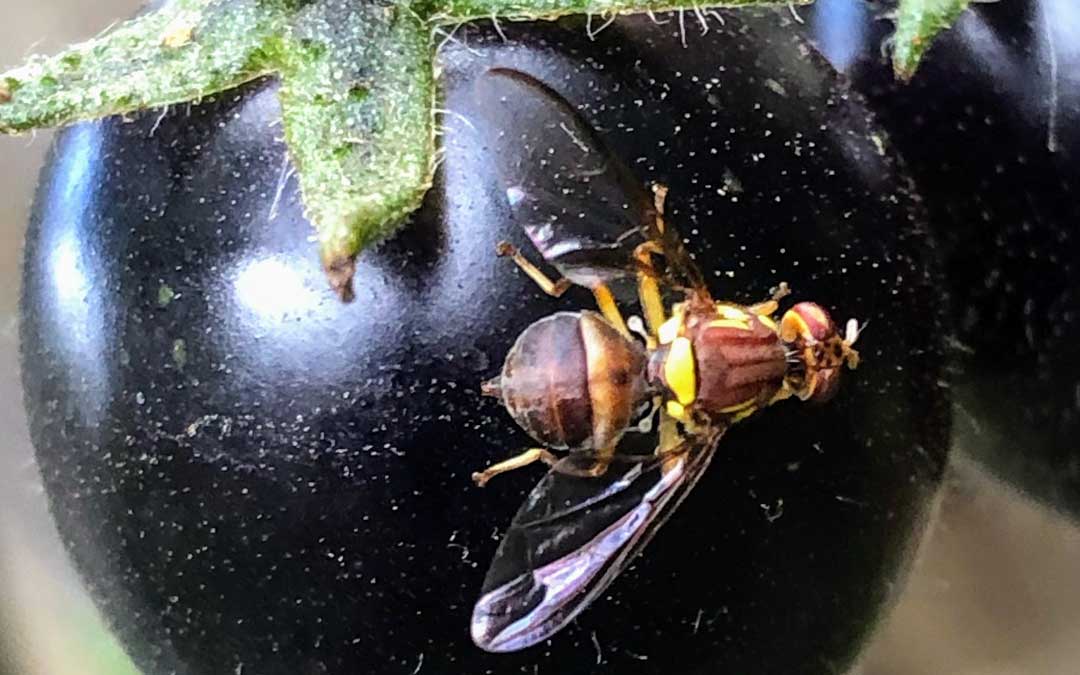You CAN defeat Queensland Fruit Fly!

Queensland Fruit Fly (QFF) arrived in the northern areas of Banyule from the Yarra Valley, about 5 years ago and has spread suburb by suburb. If it hasn’t arrived in your area, expect it next season and take action or risk losing an entire season of fruit and vegetable production. The QFF female stings the fruit, depositing eggs within. The sting is imperceptible. What will look like normal fruit on the tree, when picked will be full of maggots.
Sustainable Macleod is now in its 4th year of a prevention program, initially funded by a Banyule City Council Environment grant. During that time we have developed a simple strategy that you can implement at home, easily and relatively inexpensively, to defeat this pest.
4 years ago, the Sustainable Macleod community garden was infested with QFF in its stone fruit and tomatoes, capsicums and chillis. 3 years ago only capsicums which had been improperly netted were affected, and for the last 2 years, around 1600kg of fruit and vegetables have been grown, all free of QFF.
Sustainable Macleod recommends using exclusion netting wherever possible, and weighing the net down around its base (with soil or bricks) so QFF cannot enter from ground level. Excluding QFF is 100% effective! The net should be white and 2mm x 2mm or 1mm x 3mm. Your local nurseries will stock it or it can be obtained through Sustainable Macleod. This net is 6 metres in width, can be bought off the roll and is generally under $5 a metre. Net your susceptible vegies (including eggplant) after pollination.
If you have a large fruit tree then the alternative is to spray with kaolin clay which is sold as ‘Overhaul’ and available at local nurseries. Spray the fruit liberally on all sides. Include stone fruit, apples, pears and quinces, feijoas, guavas, pomegranates, figs, and citrus, particularly Myer Lemon and cumquat trees. Kaolin clay washes off easily in a sink of warm water but washing is unnecessary if you intend to peel the fruit. Kaolin clay will adhere through most rainfall but may need re-applying from time to time. Begin spraying when the fruit is small and unripe. QFF hate the grittiness of the clay and will not sting the fruit.
You can use lures as an additional measure and at the community garden we certainly do. Wild May attracts the males only and will tell you when they have arrived so that you can take further action. Put it out in August and top up weekly. Ceratrap is a liquid protein that attracts both males and females. Put it out in September and it will last 4-5 months without needing replenishing. Lures alone are not enough as they do not mop up all QFF. Our advice is net, net, net!
For more information visit the Sustainable Macleod Queensland Fruit Fly page.
Written by Robin Gale-Baker
